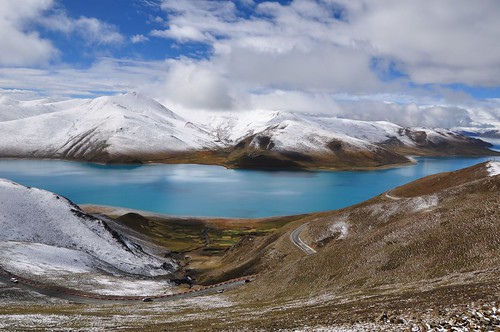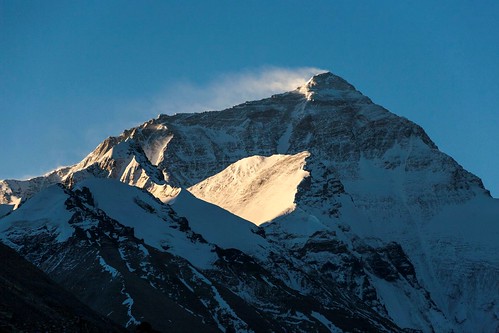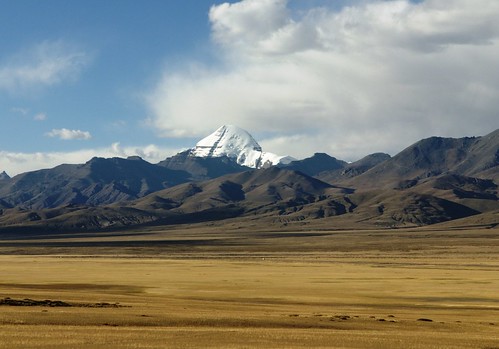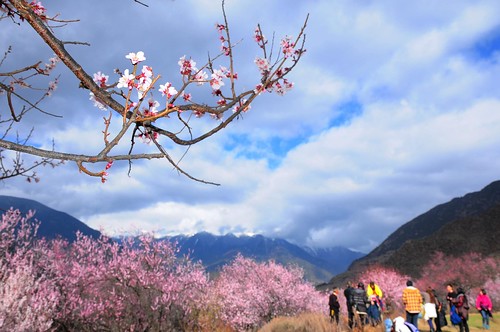Culture and heritage runs in the veins of Tibet, and the cities are an amazing reflection of that. Encompassing extraordinary geographical structures, beautiful rituals, and a unique lifestyle, Tibetan cities are graceful. Some ancient cities are present in the region and they tell stories of a glorious past. The cities hold great value, and they always give something unique to the visitors. Once you tour to Tibet closely, the cities hold an enchanting appeal. Explorers always love historic architecture and ancient cultures. Tibet has the power to intrigue and fuel our imagination. The cities of a place tell much about it and Tibet’s beauty can be enhanced by visiting its major cities.
Overall, there are 7 major prefectures in Tibet. However, the most attractions lie in the following 5 regions.
Lhasa
Tibet has many attractions, but Lhasa has been the epicenter for more than a millennium. Lhasa is often called the “Place of Gods,” and the holy city keeps on captivating the tourists. High above sea level, Lhasa is situated at a height of about 36580m. The exact location is in Tibet’s south central region. Political, cultural, as well as religious ceremonies dominate the city’s activities.

Potala Palace
When you experience the Potala Palace for the first time, you are guaranteed to get goose bumps. The colors come to life and nature’s charm is on full display. The Tibetan quarter located here has carefully preserved some aspects of traditional life. The serenity of Jokhang and the pilgrim circuit can make anyone fall in love with Lhasa.
Climate of Lhasa
Lhasa generally remains cold, and the time span between April-October is particularly suitable for tourists. Temperatures vary wildly, and it often becomes extremely cold. Agriculture forms the backbone of Tibet’s economy, and Lhasa has developed agricultural facilities quite well. Residents openly practice agriculture along with animal husbandry. From Sera Monastery to Jokhang Temple, Lhasa has a high historical significance. Tourists can dig down deep and enjoy the city’s culture by visiting the night spots, if interested.
Shannan
The Shannan region has a population of around 330,000. It spreads over an area of 79,700 sq. km. Located in the southern part of Tibet, Lhasa lies to the north and Nyingchi lies to the east. Most civilizations are formed at the banks of a river and Shannan contributes greatly toward the Tibetan civilization. Life began here, thousands of years ago, and the kingdom of Tubo originated in this very place. Buddhist monasteries are a crucial part of Tibet’s culture, and the first one was in Shannan.

Yamdrok Lake
Climate of Shannan
The climate is quite favorable here, and a semi-dry weather is prevalent most of the time. The average temperate stays between 5-8℃ throughout the year. Rainfall is mostly experienced at night and this is a beautiful characteristic of this place. Tibet’s first farmland was formed in Shannan; quite naturally, it became the agricultural hub. Don’t miss the Tibetan Opera, which is exclusive to this region. Festivals, religious customs, colourful garments, and beautiful ornaments are easily available in the market regions. Mingling with the local people is extremely easy and the major attractions include Yumbu Lhakhang Palace, Trandruk Monastery, Samye Monastery, and others.
Shigatse
Each city in Tibet is beautiful in its own way, and Shigatse is the second-largest Tibetan town. The city has changed greatly over the years and now it has become a busy, modern town. Shigatse’s elevation is 3,836 and the population reached 98,700 recently. Shigatse Dzong presents a picturesque frame and it looks exactly like Potala. Tashilhunpo Monastery draws huge crowds and the traditional Buddhist culture resides here. Shigatse, also known as Xigaze, is 250km towards Lhasa’s southwest and it is a dream destination for international tourists.

Mount Everest
Climate of Shigatse
However, Shigatse’s climate is hard, and the elevation impacts it to a great extent. Long exposure to sun rays make it dry, and travellers need proper protection against the harmful effects of the sun. Transportation facilities have developed greatly, and Shigatse connects the whole of Tibet. Splendid natural views, traditional Tibetan life, and breathtaking monasteries make Shigatse extremely attractive. The people of Shigatse know how to enjoy themselves and the festivals are full of life.
The exhilarating view of the mighty Himalayas and the road trip to Everest Base Camp from Shigatse are the major attractions for travelers. The rough roads through of the mountain passes provide enough enthusiasm to the adventure lovers.
Ngari
Tibet’s Ngari city is not only beautiful, but it’s unique from all sides, too. With an amazing elevation of 4,500m, Ngari is often termed as a plateau situated on a plateau. To the south of this region lies India, the autonomous province of Xinjiang Uygur lies in the northern part. The region is scarcely populated - only 77,000 live in the total land area of 300,000 square km. The roads are difficult and the high altitude climate is often unfavourable for stay. Ngari is still enigmatic and explorers are curious to find out more. Your Tibet trip must include Ngari, as the place has numerous things in store for you. Agriculture is a primary occupation of the locals and many pasture lands are present too.

Mount Kailash
The major attractions are Mt. Kailash, Lake Manasarovar, Guge Ruins, and Donggar Frescoes. Summer months are perfect for visiting, and usually the rain doesn’t hamper the mood of the tourists. As Mt. Kailash is present in this charming location, the city easily became a religious spot. Youngsters who love an adrenalin rush can try out the trekking option.
Mt. Kailash has a tremendous religious significance, as it is sacred to as many as four religions. Each year, thousands of pilgrims come to offer prayers to their respective deities. Hindus believe that Mt. Kailash is Lord Shiva’s abode and the sacred peak radiates spiritual energy. In Buddhism too, Mt. Kailash holds special significance and many Tibetan yogis were believed to dwell here. The holy peak is also considered sacred by the Jain, as Tirthankar achieved his Niravana here.
Nyingchi
Cities with mountains in the backdrop are amazing, and Nyingchi redefines natural beauty. The autonomous region of Tibet has great geographical significance ,and Nyingchi is located in its south-eastern part. Magical panoramas are common in this city, 3000m above sea level. Sudden climatic changes are not felt here, as the altitude is not that high. It is quite favourable for travel. Flora as well as fauna are found in wide abundance in the lush green forests. Fruits are produced in the fertile lands and many herbal medicines are prepared. Oranges, grapes, and bamboo are among the major farm produce. Often called Tibet’s Switzerland, Nyingchi’s scenic charisma is its strongest point. The rains add a special charm to the place Luoba as well as Menba tribes inhabit this area.

Nyingchi Peach Blossom Festival
The major places to visit are Paga Temple, Ranwu Lake, Pugu Moastery, and Benri Mountain. From yak racing to dancing performances, local rituals will intrigue and educate.
The places to travel in Tibet are plentiful and the cities are magnificent. Plan your Tibet tour accordingly and enjoy the beauty of these picturesque areas.
